Diverse Educators: A Manifesto - Book Review
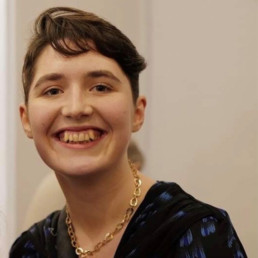
Written by Madeleine Spink
Madeleine completed a PGCE in Citizenship at the IOE after studying at the University of York and Goldsmiths. Madeleine now teaches Sociology, PSHCE, Oracy and History at Langley Park School for Girls in Bromley.
Diverse Educators: A Manifesto is edited by Hannah Wilson and Bennie Kara, with contributions from over 100 educators, structured around the Equality Act 2010.
It starts with a quote from Maya Angelou that “diversity makes for a rich tapestry, and we must understand that all the threads of the tapestry are equal in value no matter what their color.” The books format is best described as a tapestry. It is made up of ten chapters, one for each of the nine Protected Characteristics (Age; Disability; Gender Reassignment; Pregnancy and Maternity; Marriage and Civil Partnership; Race; Religion and Belief; Sex; Sexual Orientation) with a tenth chapter exploring intersectionality.
The book is collaboratively produced and mixes personal and professional experiences. Educators generously sharing their experiences and learning include primary and secondary teachers from all age groups, backgrounds and life experiences. The book develops the readers empathy to the diversity of educators, as well as the diversity of opinion of people within each protected characteristic. For example, the chapter on disability includes personal experience, the need for disability in RSE, practical tips to involve students in curriculum planning and data on the permanent exclusion rates for disabled students. It feature’s ACT’s own Lee Jerome on Intersectional Citizenship as a status, a feeling and a process. The chapter on Transgender inclusion is also insightful and talks about Lucy Meadows, whose death should not be forgotten by teachers who have followed her into the profession.
Deep questions are asked throughout, and the contributions informed my thinking about whose responsibility inclusion is, whose work it often ends up being and whether inclusion work is for the long term or ‘en vogue’. I would have loved to have seen a chapter talking about working class teachers existing in the middle class school environment, and how this identity intersects with the protected characteristics.
The variety of editing and writing styles did make the manifesto lack cohesion and feel inaccessible at times. The structure takes time to get used to, and can be navigated either by starting with the editors overview and selecting the sections that appeal to a particular interest, or by focussing on the key takeaways and ‘contributions’ to the manifesto at the end of each chapter. This changes depending on how the chapter has been edited, and some chapters are referenced while others lack referencing. It is a tapestry of a book, to capture such a variety of perspectives is a huge achievement, but not everything will appeal to everyone.
Diverse Educators is a book to dip in to, reference and use as a guide to practical steps that can be taken to inclusion. It would be a good choice for a staff book group and comes with a reading guide and questions. There’s a lot of ways this resource can be used and shape teaching, learning and the school environment.
Being the teacher that I never had...

Written by Craig Weir
LGBTQ+ Educator, Consultant and Safeguarding Lead
People often ask why I became a teacher. The answer – to be the teacher that I never had.
My own secondary school experience was tough. I lived in a small town off the west coast of Scotland where social status was defined mostly by what football team you supported: Rangers or Celtic. My lack of interest in either team made me an outcast to the boys in P.E, leading to me being picked last for all sports and seen as less alpha. It was obvious that the boys quickly assumed that I was strange because I didn’t see football as the most important thing at that point. It wasn’t that I wasn’t interested or good at sports; the assumption was that I was different because I couldn’t participate in the locker room “banter”.
This was the start of the multiple years of being bullied for being a “fag”, “gay boy”, “poof” or “bender”. These words were hammered into me daily from what felt like many and most of the boys. Instead of reporting this, I decided to hide my upset for the fear of looking weak and upsetting my family. It was, in fact, my cousin who spoke up when they witnessed the unkindness of their own friends towards me. When my mother finally asked the school to step in and help, they really could not and did not do much. The school were confined by the section 28 legislation that banned the promotion of homosexuality; I still struggle with this now. Unfortunately, the school did not act with speed or strength, which led me to absorb similar abuse throughout most of my school years. In all honesty, I think I’d struggle to write how I really felt at this time. In fact, this is a time that I have lost as it feels better to have “forgotten” what really happened. What I do know is it does – and did – get better.
On leaving school, I trained in musical theatre at a very famous drama school in central London. The fact that I was moving hundreds of miles away from the pain was comforting. I was a real-life Billy Elliot and finally recognised myself and sexuality in others around me. This eventually led to me working in theatre, television and film with some of the biggest names in the industry. I never thought I was going back to secondary school… ever.
Like others, I found the pressures of work got to me and my love for an industry was being destroyed by the conditions I worked under. I was constantly showing poor health and was “blue lit” to hospital after a suspected brain aneurysm which was in fact stress. I hated my job, the hours, and the fact it was destroying one of my biggest loves – the theatre. I also felt too proud to admit that this wasn’t for me. I was worried that I had failed. Again, I was worried that I would upset others and seem weak.
With the support from my partner and my family. I quit my toxic career and retrained as an English teacher. Why? This went back to the hope that I could support someone in a way that was never available to me.
I now work at a comprehensive school in South London. The school has a large focus on sports and it could be said it’s pretty alpha in many ways: competition is very important.
As an English teacher, I went back into the closet and kept my private life private. Some of my colleagues were aware and encouraged me to be open publicly within the school. For some reason, I just could not do it and I didn’t know why.
I now want you to imagine a Wednesday afternoon. I was teaching Romeo and Juliet and Mercutio has just started the “Young Hearts Run Free” scene in Baz Luhrmann’s movie version. My class was overrunning; another class were waiting at the door ready to come in. It was a busy corridor. As I released my class, the popular girl in year 8 was at the door – strange because I did not teach her. This is the girl that can command the attention of her peers in a breath. I’m sure you know the type. Anyway, she knocks on the door asked loudly:
“Sir, are you gay?”
In all honesty, I was shocked by my reaction and shocked by her direct question. She repeated:
“I said sir, are you gay…?
My reply… “no”.
Why did I reply with this?
I then had to teach my next class with a racing heart, struggling to catch my breath, sweat pouring down my face and barely able to think clearly. I was not prepared for the question about my sexuality. I was not prepared to be transported back into the boy who stood in school feeling terrified of the question that I didn’t know the answer to.
After this experience, I thought for a long time about why I had replied “no”. I was mortified and hurt at my response. Why did I go back “into the closet” after 15 happy years out of it?
My colleagues have been brilliant; my leadership have been even better. They understood the pain and allowed me to speak. They allowed me a safe space to decide what I wanted to do.
This year, I decided to tackle this trauma myself. I was going to try to be more forthright. This started with a quick chat about equality with my year 8 class. When they asked me about my wife, I quickly corrected them and said I had a male partner. None of the students had much of a reaction but, for me, the feelings of worry and trauma came flooding back. However, I knew that this time it was on my terms.
I had started to feel empowered and more authentic. I knew that by being in control, my history and identity could be used as a positive rather than negative. So, I and another colleague decided to run the LGBTQ+ club in school. Doing this with another member of staff made me feel safe and supported. The school honoured the decision to have two members of staff on this club as they knew the support we gave one another was important. I could not have done this without her.
LGBT+ History month came round and, as Heads of Year, we both knew that we’d like to deliver an assembly to our year groups on allyship and the history that came before us. Eventually, this turned into a whole school assembly that was delivered to every year group across the week. Honestly, I was terrified. I was ‘outing’ myself to every student and staff member in the school. Starting with the Equality Act, I informed the students that I was delivering this assembly as a gay man. I could feel myself becoming emotional and I’m sure this was obvious to the students too. I was numb and couldn’t speak anymore but the band-aid was ripped off. My colleague was my hero in this moment: in all 5 assemblies she stepped in and swiftly carried on until I could compose myself to continue.
Every assembly got tougher, despite me thinking they’d get easier. I started to see myself as vulnerable again. As the year groups got older, their reactions became louder – particularly the boys, who presented with a mixture of shock, laughter and smiles. This made me feel exposed but my hope was that my pain would be far less than the gain for the students who needed to hear this.
The assembly was received well. Children I’d never met before were saying hello to me. It was positive.
Was there a negative? Yes. I remember a teenage boy stirred up a small anti-ally party in one of his lessons immediately after the assembly. The teacher, of course, had my back and had him removed immediately. Nevertheless, I remember this more than I remember the positives. Recently, I’ve had an experience of another boy miming certain physical acts that he thinks are related to me. Sadly, both obvious negatives here came from boys, boys that are respected and known by their peers. Whilst this could be another trauma trigger… by releasing my pain and worry, I have realised, I’ve gained strength.
Honestly, I have no idea if my experience or honesty has helped anyone at school. What I do know is that I have helped me. Would I have done things differently? Absolutely. However, when we struggle with pain or trauma, I truly believe we can only do our best in that moment. I have amazing friends and colleagues who have supported me in being honest, transparent, and visible. Hopefully, this visibility will help someone else one day.
Why Don’t We Talk About Intersectionality in Schools?
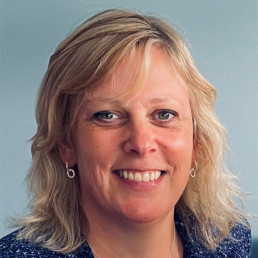
Written by Dr Jo Trevenna
Dr Jo Trevenna has over 20 years' experience of educational leadership from early years to post-graduate level. Her ongoing academic interests centre on Leadership and EEDI. Her company, Potential Education, offers leadership reviews, support and training and EEDI-focused school support.
There can’t be many of us still thinking that human identity is singular. Right? Aren’t we a combination of diverse characteristics that create and impact on our existence? Expectations and assumptions around combinations of characteristics are increasingly illuminated in societies, with light thrown on those who experience multiple discrimination and shade thrown on those who discriminate against those with different combinations of characteristics. The complexity around identity is foregrounded in explorations of intersectional discrimination. Yet intersectional disadvantage is not generally a focus for English schools.
Why?
Is it a lack of understanding and awareness or the lack of external accountability?
The Law
Critical awareness of the vulnerabilities faced by those with exact combinations of identity characteristics was first associated with the legal work of Kimberlé Crenshaw which looked into the discrimination experienced by African-American women in terms of ‘intersecting patterns of racism and sexism’ (Crenshaw 1991, p1243). Crenshaw asserted that anti-discrimination legislation in the United States did not actually protect African-American women because, when making legal claims against an employer, this particular group had to choose between a focus on either their race or gender, even though the discrimination they faced came at the ‘intersection’ of these two identity characteristics.
Section 14 of The Equality Act (2010) recognises the potential for discrimination pertaining to ‘combined discrimination: dual characteristics’ (Legislation.gov.uk 2010). The focus here is limited to direct discrimination against the combination of only two characteristics. More significantly, Section 14 has never, in fact, come into force. It just sits there in provisional status.
As it stands, therefore, the law does not adequately protect against intersectional discrimination and, in terms of English schools, there is no legal imperative to tackle intersectional discrimination.
Publicly Available Data
Published performance table data is hugely significant for schools. The first stage of the high profile ‘school and college performance measures’ website offers only a single-axis approach to pupil data. Some basic intersectional data is available on the ‘Explore Education Statistics’ section of the platform relating to ethnicity and disadvantage, disadvantage and gender, SEN and ethnicity. However, the data remains on cohort numbers and does not provide any information which may indicate the impact of those intersections on pupil academic performance, exclusions/suspensions and attendance. FOI requests can be made and the GOV.UK website also offers the facility for researchers through its new Grading and Admissions Data for England (GRADE) service. This service may be a significant step forward in terms of higher level transparency but it does not provide readily accessible data to the public on intersectional discrimination affecting pupils.
Data revealing the intersectional factors affecting pupils is available to school leaders and governors, local authorities and Ofsted via the ‘Analyse School Performance’ (ASP) secure access platform. Filtering mechanisms enable reports combining specific pupil characteristics, eg: boys with SEN, and scatterplot graphs make it relatively easy to identify patterns of underperformance because of key combinations of protected characteristics thereby highlighting potential impact of discrimination and flagging up need to address. Another school performance document is the Inspection Data Summary Report (IDSR), which is accessed on the secure ASP portal. The IDSR is a key document for Ofsted Inspectors when preparing to inspect a school and informs initial discussions with headteachers. Like the ASP tool, the IDSR does provide schools and Ofsted with a retrospective mini intersectional tool in its coding on scatterplots of the progress and attainment of pupils by binary gender classification and SEN status and deprivation status. However, there is no public access to this data.
To sum up: disadvantages experienced by pupils with specific combinations of identity characteristics in English schools are not readily flagged in publicly published school data. Perhaps Ofsted, which does have access to this anonymised intersectional data via the ASP and IDSR, has the potential to be the driving force in helping schools engage with intersectional discrimination.
Taking a sample of 68 Ofsted Section 5 inspection reports published in a six month period (not including those which inspected an already ‘Good’ school), there are only references to single-axis identity characteristics. In this sample, Ofsted, as the key inspection mechanism for schools, does not engage with the impact of intersectional discrimination on pupils. The lack of referencing in this sample of reports is not surprising given that Ofsted’s School Inspection Handbook only relates identity characteristics on a single-axis framework.
As it stands, then, there is no legal accountability, no easily accessible public data to enable transparent exploration of the impact on pupils and little Ofsted engagement with intersectional discrimination and disadvantage. Right now, without the external accountability structures, it is the choice of school leaders whether or not to adopt an intersectional approach to their schools. Given that most of us agree that identity has multiple components, it is surely time to explore how an intersectional approach can throw light on intersectional disadvantage and discrimination and therefore help schools to tackle it head on despite the lack of an external accountability framework.
On Disability #IDPwD2022
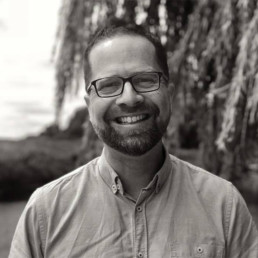
Written by Matthew Savage
Former international school Principal, proud father of two transgender adult children, Associate Consultant with LSC Education, and founder of #themonalisaeffect.
“My own heart let me more have pity on; let
Me live to my sad self hereafter kind,
Charitable…”
(Gerard Manley Hopkins)
In many ways, I have enjoyed my return to face-to-face consultancy, and to the buzz, warmth and joy of human interaction. However, I have also realised something else: on Zoom, I was not disabled. On Zoom, I could still walk and run, swim and cycle. On Zoom, I did not need my wheelchair, crutches or mobility scooter to move around. On Zoom, nobody would have known I was any different.
In recent months, I have been to restaurants with friends and colleagues, and I have developed an interesting habit. As soon as I am seated, I ask that my scooter and crutches are taken away out of my view and the view of others. I do the same when I am speaking to an audience too. Somehow, I seem to think that, if my disability is hidden from view, it will no longer exist.
When I first became ill, the talk was all of diagnosis and recovery. Medics were optimistic, and friends and family still asked that I “stay positive”. However, with time, the medics started to lose hope, and friends and family, not knowing what to say, chose, instead, to say nothing. It feels increasingly like my present has become my future, the two intertwined.
Although often relentless and ablaze, my pain is silent: mixing medication and mind muscle, I try to ensure that nobody knows. Similarly, I have managed to mask my encroaching stammer so far, although I know I will start to lose that battle soon. But people see my inability to walk before they see me; and, therefore, try as I might, it cannot be hidden.
This has presented me with a problem. As my disability becomes my body, I cannot be ashamed of one without being ashamed of the other too. Like many who have survived childhood trauma, I have a lot of shame, but I have realised that I cannot be ashamed of my disability. And that, as long as it is a guest in my house, I must welcome and embrace it as myself and, in so doing, love it too.
#DisabilityAwareness #DisabilityPride
The 3 Cs of DEIB Work: Consciousness, Confidence, Competence
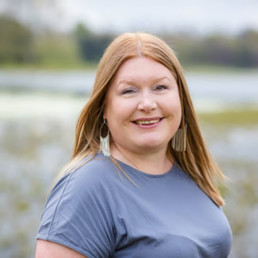
Written by Hannah Wilson
Founder of Diverse Educators
Our Journey
When I am running training on DEIB (Diversity, Equity, Inclusion and Belonging) for different stakeholder groups, I suggest that they see this work as a journey. The DEIB journey is one we go on individually and collectively, personally and professionally. The journey is non-linear and quite messy – different people will go off on different routes to reach the same goal and people will get on and off at different stages. This journey is a marathon and not a sprint, so we need to pace ourselves and we need to sustain our commitment to the work.
Motivation to go on this journey is great, but it is the habits that we unlearn and relearn, that will enable the DEIB vision to become embedded into the provision. This is where we see impact and we can make change happen. Moreover, this journey has three parallel lanes. The 3Cs of Consciousness, Confidence and Competence are my way of breaking down the different things that we need to develop in ourselves and each other.
Our Consciousness
Def. the state of being aware of and responsive to one’s surroundings; a person’s awareness or perception of something.
We need to start here, fighting our bias for action as educators like to do and get busy finding solutions to problems. But we need to start with the being. We need to become aware of ourselves, of each other and of the environment in which we are existing.
Consciousness is about exploring our own identity, recognising our own bias and navigating our own power and privilege. We need to become conscious of what we have not experienced, of what we have not been exposed to, of who we do not know.
We talk about getting ‘comfortable with being uncomfortable’ because we need to do the ‘inner work’ before we can start the ‘outer work’. We need to start with understanding ourselves on a deeper level.
The call to action is to be able to look in the mirror and to understand who we are and what shapes our thinking/ behaviour.
Our Confidence
Def. the feeling or belief that one can have faith in or rely on someone or something; the telling of private matters or secrets with mutual trust.
With increased awareness, we recognise that we do not have all of the answers. So we need to get confident in acknowledging that we are not the expert and that we need to listen to and learn from others. As we grapple with new concepts and new language, we need to model that we are going to get it wrong, that we are going to need support and feedback, and that we will make mistakes, but we will learn from them.
Confidence is about getting curious and asking more questions. We need to listen to others, to their lived experience, in order to expand our own perspective. We need to have the confidence to discover some hard truths about our organisation.
As we become confident engaging with the subject matter, we then need to become more confident in what we say and what we do. We need to stand up and speak out on issues impacting our community, we need to call in and call out behaviour and language that is not inclusive.
The call to action is to be willing to be courageously open and vulnerable.
Our Competence
Def. the ability to do something successfully or efficiently; the quality or state of having sufficient knowledge, judgment, skill, or strength.
With consciousness and confidence, we can then start developing our competence. In order to do the work in realising our DEIB intentions and bringing our vision to life, we need to develop new skills.
‘We don’t know what we don’t know’ until we start the learning journey. By slowing things down we can be more intentional in identifying the gaps in knowledge and in planning the training to close these gaps over time.
Being competent means that we develop muscle memory, we practise until the new skills feel natural and automatic e.g. diversifying the curriculum/ library, reviewing policies/ processes and practices through a DEIB lens, holding courageous conversations, showing up as an ally.
The call to action is to invest time and resources into ongoing training for yourself and others.
Our Commitment
So as we head to the end of the year, we invite you to reflect on the journey you have been on with your DEIB work. Where have you become more conscious, more confident and more competent? And how have you cascaded this learning to others?
What does Remembrance Day mean to you?

Written by Rich Watts
Rich Watts is a qualified teacher with over 10 years’ experience in the classroom, he has an MA in Education from the University of Winchester. He has worked in several roles in schools, including Head of Faculty. Rich left the classroom in 2018 to head up the British Army Supporting Education (BASE) Programme.
When you think of Remembrance Day, what comes to mind? Traditionally, we associate it with wearing red poppies and The Cenotaph. In actuality, it means different things to different people.
So, for 2022 we have developed new, free resources that introduce students to the ways different groups commemorate Remembrance, highlighting diverse voices and experiences. The resources have been designed to encourage students to further explore the vital, unsung role of women as well as members of the LGBTQ+, Sikh and black communities.
The resources have been created for students aged 11-16 across all four nations. They present schools with a fresh and engaging approach to Remembrance Day. Students will learn what Remembrance is, why we come together to commemorate it and the diverse ways that we commemorate Remembrance. Individuals will also develop key skills and knowledge on the topics of similarities and differences.
This year’s resources have been designed to encourage students to think about the parades and memorials they will have seen – perhaps a theatre production too. Students will be encouraged to find out more about The Women of World War II Memorial. It remembers the seven million women who served, either in the armed forces or on the Home Front. And at the Imperial War Museum, visitors can see the Memorial to Black, Asian and Minority Ethnic (BAME) communities who lost their lives to conflicts in the name of Britain’s Empire and Commonwealth.
Students will be asked to think about the different varieties of poppies that are worn to mark Remembrance and their individual significance. Did you know that the Khadi poppy honours the contribution of Indian soldiers to Britain during World War I? And did you know that the purple poppy commemorates the animals that have been victims of war?
Students can further explore subjects touched upon in the Remembrance resources. They will learn about the remarkable contribution of diverse voices standing shoulder to shoulder with Army personnel past and present, including women and members of the black and LGBTQ+ communities. It also includes a Sikh Service pack produced in association with the Defense Network and historian, Gurinder Singh Mann. It allows students to understand the varied contributions of Sikh soldiers throughout the history of the British Army.
Julian James, a design technology teacher in Wales, said: “For too long, assemblies celebrating Remembrance Day have always followed the same outdated format. To mark this year’s poignant event, the British Army is providing schools with a fresh approach to presenting such important, historical information. Its resources feature music, thought-provoking images and stimulate questioning. The Army’s lesson resources are undoubtedly a new way of keeping the tradition of Remembrance Day going, while deepening students’ knowledge of its meaning and relevance to their lives.”
Teachers can download the Remembrance Day resources for free at: https://britishar.my/remembrance
My Experience as an Neurodivergent Student Teacher

Written by Catrina Lowri
Catrina Lowri is the founder of Neuroteachers and a neurodivergent teacher, trainer, and coach. As well as having 22 years’ experience of working in education, she also speaks as a dyslexic and bipolar woman, who had her own unique journey through the education system.
I hid my Neurodiversity in my professional life for many years, and here is why.
Student days
When I first started teaching, back in the 90’s, I had never met another neurodivergent teacher. I declared my dyslexia on my PGCE. The course tutor had no idea what to do with the information and told me, if I wanted to learn about Special Educational Needs and Disabilities (SEND), I needed to take extra courses. Our only training on SEND was half a day of project work where we produced materials to support different ‘needs’, then shared them amongst ourselves.
As I thought this was inadequate, I offered to give a half hour talk about my dyslexia.
Attendance was voluntary.
Only half the cohort turned up.
Afterwards, another student commented that “Dyslexia is a class issue. If you are working class, you are thick’ and then he pointed at me “But if you are middle class you’re ‘dyslexic’”. He made air quotes and rolled his eyes. Not the reception I’d been hoping for. After that, I stayed quiet about my dyslexia.
My first Manic Episode
I had a serious car crash at the start of my third teaching practice. My car flipped and rolled onto its side. My passenger, and I had to escape through the sunroof. Luckily, I was driving a second-hand Volvo. Both of us escaped without a scratch.
No harm done. Or so I thought.
I stood on the pavement, watching emergency services deal with the debris and seeing to the driver, whose car hit me, (and escaped with only cuts and bruises). I had an overwhelming feeling that I must be special to survive such a terrible accident.
I remember telling the paramedic that I was fine and
“Didn’t even skag my tights!’, and then giggling hysterically.
I started to stay up late, writing down my brilliant ideas. I wasn’t sleeping and was hallucinating. Although I was still going into my placement school, my lessons went on tangents, and I swung between excitement and irritation. I was sent home until I’d seen a doctor, but they put me on the wrong medication.
As a quick caveat, I am not anti-medication. Medicine can save lives, but I was given SSRI’s (selective, serotonin, reuptake inhibitors) without a full assessment. My doctor didn’t know that I was bipolar. I had no diagnosis. SSRIs can trigger manic episodes in some people, and that is what happened to me.
Surviving the accident ‘proved’ to my manic brain, I was impervious to metal. I stopped looking when I crossed the road and started taking other risks. One day, I nearly got hit by a car. Fortunately, my erratic behaviour was witnessed by a medical receptionist on her way back to work. She persuaded me to speak to a doctor, who assessed my need as acute and found me a bed in a secure ward.
I was in hospital for 2 weeks, then a day patient for a further 6.
I had to re-sit my final teaching practice.
Resitting
I started masking whilst re-sitting teaching practice (TP) at a lovely inner city secondary school in the North of England. I did much better because I was no longer manic. I also moved to a tiny house on the edge of the moors, and lived alone, far from distractions. This had two advantages; I couldn’t afford to go out, and I had no one to go out with, so I worked and slept.
Occasionally my ND got exposed; I’d make spelling mistakes, or misunderstood what my mentor wanted because of my auditory processing difference. Generally, no one noticed. I kept my bipolar at bay by going to bed early, then getting into school at the same time as the caretaker, so I could have some headspace. Then my tutor came in to observe me.
“You seem so different to the last time I observed you – what happened?”
I had lied to him. I told him the reason I went to hospital was due to physical injury caused by the crash and that I missed some of my TP because I was ‘a bit anxious’.
I didn’t tell him about the suicidal ideation or being impervious to metal. I felt like if I said this, he would say I shouldn’t work with children. I love my work, so I stayed quiet
I passed the course.
I’m not proud of lying, but I did what so many ND people do to get through life. We mask. Because we will have to, until the world changes to accommodate us.
What it really feels like to lead Diversity, Equality and Inclusion

Written by Zahara Chowdhury
Zahara is founder and editor of the blog and podcast, School Should Be, a platform that explores a range of topics helping students, teachers and parents on how to ‘adult well’, together. She is a DEI lead across 2 secondary schools and advises schools on how to create positive and progressive cultures for staff and students. Zahara is a previous Head of English, Associate Senior Leader and Education and Wellbeing Consultant.
When I was given a DEI Lead role, I genuinely jumped with joy. It’s my dream job and dream career long term. I’ve delivered workshops, I’ve written, blogged and podcasted more and more about the work I do and I’ve been approached by several people looking to do similar for their organisations. Then I hit a very long ‘DEI-esque’ break: maternity leave. The time has forced me to reflect, feel and be still in many ways about my work. Now that I return as Head of Whole School DEI and Wellbeing, here is a short account of what it really feels like to lead DEI for an organisation and a few tips for DEI and School Leaders looking to create and support this role in their organisations.
It’s overwhelming and underestimated
DEI is everyone’s responsibility because it affects everyone – quite literally. Yet, it’s only recently become a ‘buzz word’ or perhaps only recently has it been given the accolade it deserves; it cannot be ignored. The rise (gift) of wokeism and a Gen Z workforce means it has to matter more.
Needless to say, for many people in the workplace (older millennials like myself, Gen X, baby boomers…) DEI is overwhelming because we are being forced to unlearn or reconfigure what we’ve normalised and learned not just professionally, but personally through our own lived experiences; our personal truths, if you will.
In most cases in the workplace, DEI learning has to happen in a very small window of time, sometimes your own time and at double speed. With post-Covid, work-life imbalance and Adam Grant’s perfect explanation of languishing that many of us are experiencing, it’s safe to say, (un/re)learning about DEI may not be high on anyone’s agenda.
That’s hard work. It’s overwhelming for a DEI Lead who has the responsibility to navigate this change for an entire organisation. At best, they’ll get it onto your radar, at worst, the organisation will be accused of tokenism.
As a DEI lead in education, I purposefully and actively use the words ‘organisation’ and ‘workplace’ because often, people mistake schools for being anything but. Working across a few sectors has taught me schools have very similar ‘issues’ to any other workplace – albeit they’re not really profit making, they don’t benefit from increasing budgets, they’re constantly at the forefront (or receiving end) of any social change or adversity, and they don’t (in many cases) have specialised, on site HR (Trusts, the independent sector, FE all have similar needs and issues). You might say, it makes the work in education more complex and dare I say it, requiring more skill.
Doing this work solo in the first instance, with it still being regarded as ‘new’ (although I’m getting tired of this excuse now) can be justified, but is a big job. But let me caveat this: DEI is a strategic and leadership responsibility which needs its own entire infrastructure. Equally, that does not mean an existing assistant head, deputy or ‘lead’ in schools capacity (desire, interest, or expertise) to do it.
DEI is specialised work, which needs time, strategising, an infrastructure, money, respect and skill – it should be at the heart of your people strategy and at the centre of your safeguarding strategy. It cannot be an add on – it just doesn’t work.
You will always be wired and triggered
Glennon Doyle quite perfectly explains to go where you are triggered in her wonderful book, Untamed. The exact quotation is plastered all over my workplace to remind me of my purpose and ‘why’. Working in DEI is so rewarding – there is nothing more purposeful than making people feel seen, heard, important and real. There is nothing more rewarding than seeing people flourish. Equally, it is so uncomfortable and hard. Really hard. There is nothing more painful than seeing people struggle mentally, physically and emotionally just because of who they are. This takes its toll.
You constantly worry about missing important dates; you want to include everyone and fear missing out on anyone from your DEI strategy; you are at the receiving end of nearly every ‘people’ problem and issue the organisation may encounter. You have an overwhelming sense of guilt and responsibility all at the same time.
The paradox is that the ‘work’ should and almost needs to happen overnight, yet it is not an overnight process.
Intersectionality becomes how you read, translate and respond to EVERYTHING. uncomfortable conversations are your comfortable conversations. A safe space is always vulnerable. And, beyond all of this, you are strategising, leading, managing, and implementing valuable policies and practices to make life so much better for everyone around you.
Whilst navigating Organisational DEI, how do you navigate yourself?
This is something I had to learn fast.
- Strategy and a timeline are key to keep you grounded, on track and suppress the overwhelm. You cannot do it overnight, no matter how urgent and pressing the work is. The top level work takes time and your Headteacher/Leader should give you time to listen, understand and identify key priorities, culture needs, opportunities and more to put a strategy in place. DEI cannot be checked off in a 1 hour CPD session, or even 3 hours of CPD. It cannot be addressed in a few lessons. It is a range of themes, a culture, a mindset and curriculum that needs to be integrated into your whole school and organisation strategy. Rest assured that the work is never done, it just gets better and better.
- You cannot do it alone. Sometimes, schools and teachers (myself included) adopt a martyrdom approach – one person manages and does it all. They become the DEI ‘expert’. They become the go to for ‘everything DEI’ whether that be strategy, staff training, student activities, DEI in the curriculum, operations and more. This can lead to a breakdown in communication, stress, loneliness, workplace conflict, more stress and most importantly, limited impact. DEI can and should be the responsibility of many. There are several strands, areas and several skills that are needed to successfully implement DEI. Once you, as Head of DEI, have created your strategy and proposed the resources needed, reach out to relevant stakeholders; reach out for expertise and give the work the importance and infrastructure it needs.
- Set your boundaries and know ‘your people.’ Leading DEI is a privilege. It is transformative for organisational culture at every level. There is so much to do and you will be pulled, pushed, challenged and propelled in every direction. In many ways this is exciting. In some ways, it can take over your life. Set your boundaries and always come back to the organisation’s vision and your strategy. This will help you set boundaries, manage expectations and make an impact.
Those who lead or specifically work in DEI are good people. They are intensely empathetic, compassionate, intuitive, just, human, brave and vulnerable (I’m biased, I know!). Identify your inner circle, the people you can trust, offload to, seek advice and guidance from. These people will fast become friends, your professional safe space.
Accept that you won’t get ‘DEI right’ first time and you’ll make mistakes, need correcting and need to keep learning constantly. This is a huge, transformative opportunity for you and your organisation – positively embrace it, no matter how scary it may seem.
In conclusion…
Would I change anything about being head of DEI? Absolutely not. I love my work. So much. It is meaningful, testing, and challenging, and I adore every impact it has. And, what do I love most? It’s about steady, meaningful change. It encourages people to confidently speak their truth(s), belong, be seen and be heard. It’s about kindness and respecting difference. It brings out the best in people – and as cheesy as it sounds, that’s the core of what we need for sustainable workplaces, better education and ultimately, good people.
For more support in leading DEI at your school or organisation feel free to get in touch and I highly recommend www.thegec.org and www.diverseeducators.co.uk for your DEI training and development needs too.
The Anti-Racist Journey of a Secondary School in Manchester
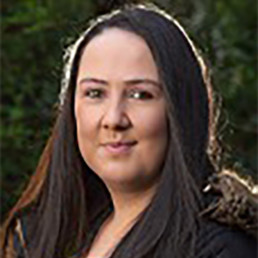
Written by Laura Morris
Laura Morris (@MissMorrisManc) is head of RS and Citizenship at a secondary school in Gorton, Manchester, with additional whole school responsibilities for SMSC and anti-discrimination. She has been teaching for 15 years. Her website is MissMorrisManc.co.uk.
Before the Black Lives Matter mobilisation of 2020, and all that followed, staff at the school I work at in Gorton, Manchester, would largely have felt positively about the work we were doing to celebrate our students, myself included. We went all out for Black History Month every year with relevant lessons across departments and external visitors invited in (as showcased in this video from October 2019), we had very few complaints of racist incidents from the students, and some work had been undertaken to decolonise the curriculum, particularly in subjects like RS, Citizenship, History and Geography. We could pat ourselves on the back for a job well done!
With all the work we’ve done since, and the huge changes that have been made, I now feel embarrassed to reflect back to pre-2020 when I thought we were already doing enough for our students. We weren’t.
Before we broke up for summer this year, I wrote a report detailing what we’ve done so far with the hope it could give ideas to other teachers and save them some time if they are starting from scratch. It’s been a process of trial and error and, while we’re still far from perfect and keen to collaborate with other schools to help us further improve, I am confident that we are now having a much more positive impact on our students in making them feel seen, appreciated, safe and loved.
In this blog I will summarise the most important parts from the report for people who are keen to improve the anti-racist practice in their school.
Named members of staff
Towards the end of the 2020-21 academic year, my colleague Ben Wilson was given a TLR to focus on anti-discrimination work in the academy and I was made associate assistant head with the same priority, which I realise puts us in a very fortunate position. Our head teacher included this anti-racist work as an objective in the school improvement plan and believed it was necessary to appoint people in posts to achieve our goals. I can’t stress enough how important it is for all schools to be willing to give time and money to staff doing this work and can only hope the example from our school will help other teachers feel confident to take similar proposals to their head teachers.
Staff groups
If I had to single out the most impactful elements of our process, it would be the staff and student groups. So many changes have been made but it’s hard to think of anything we’ve done that didn’t first come from conversations held in these spaces.
I realise how lucky I am to work alongside enough people who recognise the institutional racism present in education and were prepared to give up their time to do something about it, and that’s how the anti-racist working group (ARWG) was formed in September 2020.
We created sub-groups, each taking responsibility for a different area that we decided needed to improve, like the behaviour system and reporting incidents of discrimination, student voice, the curriculum, and staff CPD.
If you don’t feel as though you’ve got enough members of staff with the interest or time capacity to take on this work, there is no need to panic, as it is the students who have guided so much of what we’ve achieved. They are the experts and are invaluable to bringing about change.
Student voice
Student meetings started in early May 2020 during lockdown on Zoom with organisations like Kids of Colour (who still lead student meetings half-termly) and The Black Curriculum, and continued informally during lunch times when we returned to school the following academic year. It became clear how important it was for our young people to be given time to talk about their experiences of racism both in and outside of school.
At the start of the 2021-22 academic year we interviewed Year 11 students for anti-discrimination ambassador roles. They decide the agenda for the separate fortnightly KS3 and KS4 meetings, which are held during the 30-minute form time slot, lead the discussion, and, while I am in the room (to take back any pressing concerns to the ARWG), the ambassadors take responsibility for the meetings. Students discuss their personal experiences outside of school, what they believe needs to change in school, and anything that is going on in wider society that they would like to talk about. Any students who don’t feel comfortable reporting incidents of discrimination to teachers can go to the ambassadors who then feed back the details to Ben or me.
One of last year’s anti-discrimination student ambassadors said: “I feel like having this space for students is really important because we come together as a community to discuss issues that really matter to us and we think of ways to resolve it and deal with it.”
We have an annual anonymous anti-racist student survey, to help us identify issues that may be affecting students who don’t attend the meetings, and the student groups have delivered assemblies in response to the feedback to educate all students on discriminatory behaviour they might knowingly or unknowingly be perpetuating.
Towards the end of the 2020-21 academic year, Year 11 students wrote down examples of times that staff had said or done racially or culturally insensitive or offensive things. I recorded them reading out the statement of another student, to ensure anonymity, and played the video to staff during a CPD session.
Hearing the accounts woke up so many members of staff to the experience of the students, which has meant that all the work that has followed, that has resulted in an extra time commitment for pretty much everyone working in the academy, has been easier to achieve. There’s little room to question or complain about the need for change when you have student testimony to support the cause.
Discriminatory incidents
Discussion in the student groups highlighted the need for us to better deal with incidents of discrimination between students. Racism was very rarely reported but feedback from the student groups revealed this was down to the students feeling as though nothing would happen as a consequence, either because they had reported something in the past and hadn’t heard how or if it had been dealt with, or their belief that it wasn’t a priority for staff.
Ben created a reporting system (that you can read about in more detail in the report), which was trialled at the end of the 2020-21 academic year and put in place the following year, which has currently significantly increased the workload of staff who deal with behaviour incidents. But it has also meant we are in a much stronger position to educate and sanction students involved in discriminatory behaviour, as well as validate the feelings of, and bring resolution to, the victims. Different forms of microaggressions are the most commonly reported incident and students have responded incredibly well to the educational sessions they attend with Ben or me as a consequence. Victims are given the opportunity for a restorative conversation, once pre-restorative work has taken place with both students, and they almost always choose to take up this offer in the process.
The number of repeat offenders is minimal, if not close to non-existent. But the number of reported incidents has increased. Students now have the confidence in the school to respond appropriately to accusations of discrimination.
As one of last year’s ambassadors put it: “when I look back at when I was in Year 9, if someone said something racist to me I would just go home and cry. But now I would feel empowered enough to report it and I hope younger students feel that way too.”
Curriculum changes
All subject leaders completed The Key’s anti-racism curriculum review document, which identified areas for improvement for departments already on the journey of decolonising their curriculum and served as a fantastic starting point for teachers who didn’t know where to begin.
After being given department time to plan and create new resources, we’ve had a carousel format for whole school CPD sessions to share these across departments. Most departments now have a member of staff with an objective in their appraisal relating to diversifying their curriculum. During the carousel CPD we have a ‘speed dating’ format where staff spend a few minutes listening to the changes each department has made, and having discussions on the impact and any possible cross-curricular links, before moving on to the next department.
We recognised the need to better signpost these changes to students. Bennie Kara delivered a bespoke CPD session for our staff last December where she suggested posters to be placed around school. Now every classroom has a subject specific poster highlighting content relating to race (as well as sexuality, gender and religion) in our curriculums. Before breaking up for summer, subject specific PowerPoints were shown to all students too so they knew what to expect in the year ahead. Examples of what we teach can be found on our school website.
For more details on the processes above as well as other initiatives we’ve implemented, check out the report in full. Feel free to reach out to me on Twitter too!
Tackling Sexism in Schools Needs to Start with the Curriculum

Written by Rachel Fenn
Co-Founder of End Sexism in Schools and former Head of English.
End Sexism in Schools (ESIS) is a grassroots campaign organisation set up in 2020. Our aim is to support girls and boys to fulfil their potential, without gendered expectations, in a safe and supportive school environment.
Over the past two years, numerous scandals have revealed the widespread extent of sexual harassment, sexism and misogyny in schools, with Ofsted’s 2021 report into this commenting on how boys have a sense of ‘superiority’ that makes them feel they can treat girls as they wish. The answer to this has been to overhaul the PSHE curriculum to explicitly teach consent, but we know that this is merely treating the symptoms, not the cause.
The reality is that women are virtually invisible within the content of the academic curriculum, and we draw a direct line between this invisibility, and the sexual harassment boys inflict on girls. Without ever hearing women’s voices, reading and discussing women’s experiences, and learning to value and respect women’s contribution to the world, is it any wonder that boys grow up viewing women as inferior, and worthy of little respect?
When our founder first made this connection and began to campaign to change the curriculum, she was met with a problem: she had no concrete evidence to back up her claims. Research into the content of the curriculum in secondary schools was limited, and little proof beyond anecdotal evidence was available to demonstrate the extent of the problem. As such, ESIS’s first project was to uncover gender bias in the teaching of English Literature at Key Stage 3 (school years 7-9) in England’s schools. English was chosen due to it being a core subject studied by all pupils to the age of 16, and it being straightforward to identify gender bias in the curriculum content by collating data on the sex of authors and protagonists on set text lists.
In 2021, using a small army of volunteers, we researched the English curriculum in nearly a third of England’s secondary schools. With no requirements to teach any specific texts other than Shakespeare, schools have free rein to teach what they like at Key Stage 3. Given this freedom, the lack of diversity we uncovered is shocking. Our key findings are as follows:
- 82% of novels taught feature a male protagonist
- 77% of schools teach one or no whole texts by female authors across the three years of KS3, with 44% teaching none at all and 33% only teaching one; this is out of an average of nine whole taught texts across the three years
- However, the actual number of whole novels taught by female authors is likely to be even less because a larger percentage of male authored texts were mandatory (as opposed to being on a list of choices) than female – 68% compared to 57% respectively
- 99% of plays taught are by male writers, only 1% by female, and only 2% have a lead female protagonist
- A small number of schools account for the majority of female-authored texts taught; 16% of schools teach 50% of those listed in school curricula
Coupled with the fact that only 7% of pupils study a book by a female author at GCSE, this means that most children educated in England will go through their entire compulsory education never having studied a whole text (as opposed to an extract, poem or short story) by a female author. Considering that schools have free choice of the texts they teach, and that 77% of secondary school English teachers are female (the highest proportion of any academic subject), the fact that most are continuing to fall back on the teaching of male authored texts with male protagonists is powerful evidence of how engrained misogyny and patriarchal values are embedded in our society.
English is just the tip of the iceberg; the invisibility of women is evident in every area of the academic curriculum, and it is our mission as an organisation to carry out the research required to prove this, and then campaign for change. PSHE cannot continue to be touted as a panacea for solving misogyny in schools when every other lesson pupils attend teaches them that women have no value. Cultural change will only happen when the academic curriculum is overhauled to create an equal space for women’s achievements, voices and experiences alongside those of men.
You can read our report into the English curriculum here. If you’d like to join our efforts to End Sexism in Schools, we are always looking for new volunteers. Please do contact us at endsexisminschools@gmail.com.

